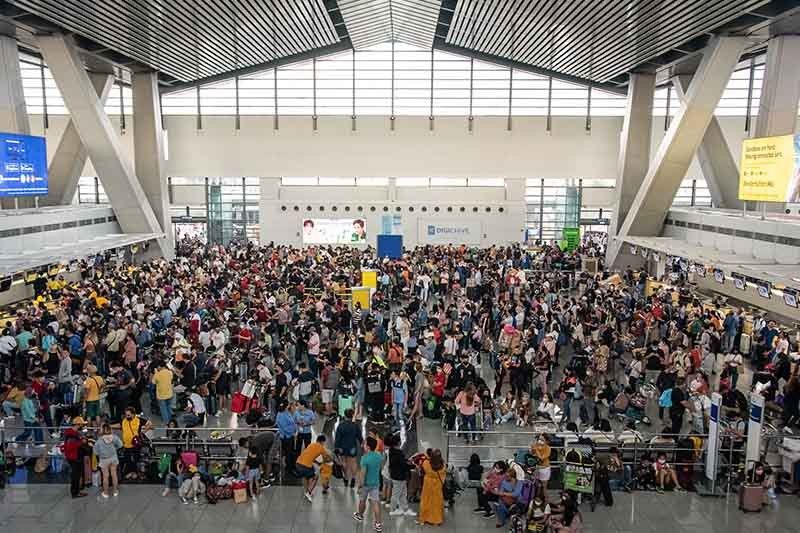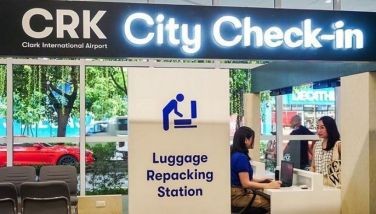Data: Airspace outage left thousands stranded, hundreds of flights canceled

MANILA, Philippines (Updated as of 11:56 am) — The airspace outage around the Philippines left tens of thousands of passengers affected amid peak travel season, as the crisis effectively ruined holiday plans for many.
Data provided by budget carrier Cebu Pacific showed that as of 7:30 pm on January 1, the crisis forced the Gokongwei airline to cancel 258 flights. Cebu Pacific noted that 31,000 passengers were affected so far.
Flights in and out of the country were left in limbo on Sunday, as flightradar24 tracking showed traffic within Philippine airspace to be virtually empty as of Sunday noon.
On the other hand, AirAsia said that their operations are back to normal as of Monday. The Malaysian low-cost airline said they canceled 44 flights, while 16 others were rescheduled on January 1.
AirAsia noted that more than 5,000 passengers were affected.
“Their supposed flights were either moved to the nearest available flight or converted to credit account. While doing this, we also provided food for the waiting passengers,” AirAsia said.
In an advisory, the country’s flag carrier noted that flight operations are returning to normal on Tuesday. Philippine Airlines, however, said that they still had to cancel some domestic and international flights on January 2.
“It will take some time to fully restore normal schedules as we reposition aircraft that had been held back or diverted to other airports and adjust flight timings based on revised clearances in coordination with the local authorities,” PAL said.
OFWs affected
The Department of Migrant Workers estimated that around 3,000 overseas Filipino workers were impacted by the airspace outage.
DMW Undersecretary Hans Leo Cacdac told ANC in an interview that these OFWs received assistance in rebooking new flights.
Radar and navigation facilities proved unresponsive on January 1.
The Pangilinan-led utility, Manila Electric Co., said they found no issues from their end amid the airspace outage.
As of 2018, the Philippines had 13 radars in place. Alongside satellite-based communications, navigation and surveillance systems for air traffic management, the former Duterte administration's transport department said this meant this covered the country's entire airspace.
- Latest
- Trending































